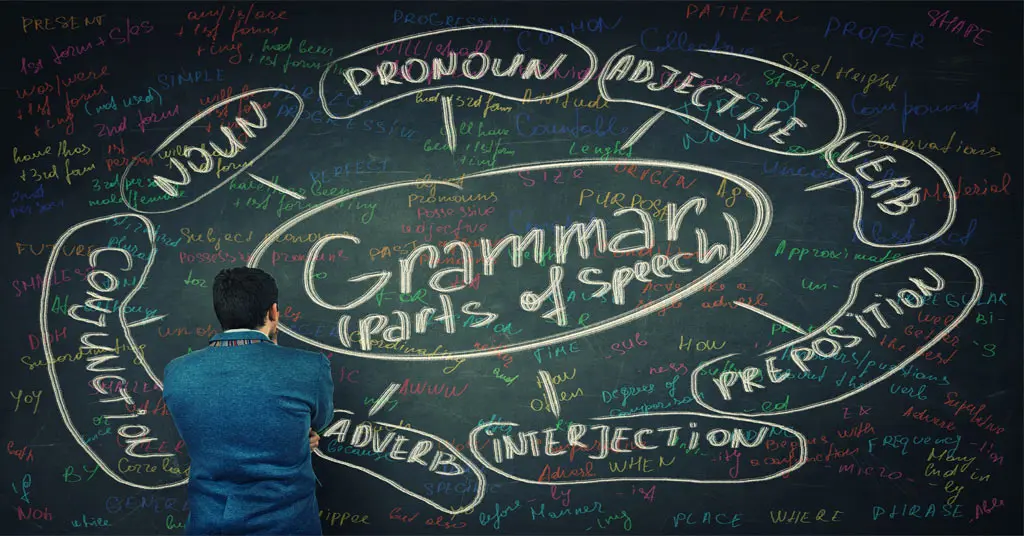Here is a breakdown of grammar rules tested on the SAT exam. You can read examples and detailed explanations for each rule in the linked information throughout the article.
Be Concise and Avoid Redundancy
You will often have to correct for wordiness. The most concise answer is usually the correct one. If information is restated or implied once and discussed again, you will have to edit for redundancy. Delete repetitive information when fixing this error. To learn more about wordiness and redundancy, you can read this article.
Conjunctions and Conjunctive Adverbs
Conjunctions and conjunctive adverbs work to join clauses. Make sure that conjunctions are grammatically correct by evaluating the relationship between information. Contradictions, comparisons, correlations, emphasis, and oppositions require proper conjunctive adverbs. For example, “however,” “but,” or “despite” should be used to show contradicting information. “Just as” or “likewise” point to comparison or similarities. Look out for conjunctions that don’t reflect the proper relationships between sentences.
Idioms
You can often fix grammatical errors with idioms by going off of what sounds right. You may need to make adjustments for gerunds and infinitives used in idioms. A gerund is a word that ends in “ing” but operates as a noun. An infinitive is a verb that acts as a noun. An infinitive typically looks like: “to (verb).” Some examples are “to be,” “to do,” or “to go.” Some idioms will require prepositional corrections. You can find examples of commonly tested idioms here.
Commonly Misused Words
Words that sound the same but mean different things are often misused and need to be edited. You can find a breakdown of commonly misused phrases, like “then” and “than,” here. You should pay attention to larger contexts to decide which word’s definition is the most logical when making improvements. To decipher what fits best, read the entire paragraph, and try to match the passage’s tone. You can learn more about words in context questions here.
Run-On Sentences
When looking for run-on sentences, you should know that without a coordinating conjunction between two clauses, or a subordinating conjunction at the beginning of the subordinate clause, the sentence contains a comma splice. You can resolve this error by adding a conjunction or splitting the sentence into two sentences. You can also spot a run-on if two or more sentences are combined without punctuation or if the sentence connects independent clauses with a conjunctive verb and commas. Learn more about rules with run-on sentences here.
Punctuation
Fixing common errors with punctuation will include adjusting the placement and use of commas with modifiers. Dashes should be used to emphasize an explanatory phrase. Listed items need to be separated by commas, and the last listed item needs to be preceded by a comma then “and” or a comma then “or.” You will also need to make corrections for the use of colons and semicolons.
Faulty Modifiers
Dangling modifiers and misplaced modifiers are grammatically incorrect. A dangling modifier is a descriptive phrase that is not next to the thing it describes. A modifier needs to be directly next to the thing it details. If a sentence starts with a modifier, it must be followed by a comma and then the thing it is describing. If the item after the comma is not what the modifier is describing, you need to rearrange the sentence structure. You can also adjust the modifier so that it describes the noun after the comma. For misplaced modifiers, the descriptive phrase is separated from the thing it describes. Learn more about modifiers here.
Parallelism
Grammar rules for parallel structures are specific and depend on an understanding of verb tense. Here are some grammar rules to look out for with parallelism: listed items should all be in the same form of either noun, gerund, or verb; phrases on either side of a conjunction should be parallel. You should pay attention to verb tense when improving the grammar for parallel structures. The verb tense must be consistent throughout a sentence, so both (or all) verbs should be past, present, or future tense.
Pronouns
There are specific grammar rules for pronoun agreement and pronoun case. You should know that the pronoun must agree with the word it replaces (the antecedent) in number and person. Be sure that the pronouns always have a clear antecedent. Pronoun case errors occur when the subject is used as an object or vice versa. You need to decipher whether a pronoun functions as a subject or as an object. The difference is that a subject is doing the action, while an object receives the action. Pay attention to the pronoun’s role to make improvements with pronoun case questions.
Verb Tense
Learning the grammar rules for verb tenses can help you across many question types. The past perfect tense is used for situations where two finished actions are described. The present perfect tense is used to describe something that started previously and continues in the present. The conditional tense is used for events that could occur in the future. The future tense describes something that will happen in the future. The present tense is used to discuss the events that are happening at the current moment. To see examples and strategies for this type of question, you can read this article.
Subject/Verb Agreement
For a sentence to be grammatically correct, singular subjects can only be tethered to a singular verb, and plural subjects can only be tethered to plural verbs. This is called subject/verb agreement. Spotting this grammatical error is often complicated by descriptions or interruptions between the subject and the verb. It can also be complicated by odd subject and verb sequences or compound subjects and compound nouns. You can find tips and examples for subject/verb agreement questions here.
Illogical Comparisons
To be grammatically correct, comparisons must follow these rules: only compare things of the same category, and don’t compare something to everything. These questions will be tricky because they typically present odd or uncommon comparisons. You can find examples and more details about faulty comparisons here.
To practice these grammar rules, try out UWorld’s SAT Prep Course. Our practice exams, detailed question explanations, and performance tracking tools will provide you with an effective study plan and important experience for success on test day. You can also find out more about your weak points through these resources. Try it out to boost your scores!




